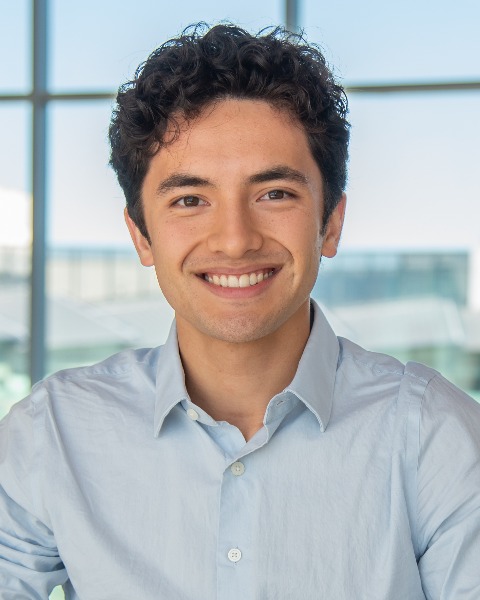Neural Engineering
(L-443) Elucidating the noradrenergic mechanism of vagus nerve stimulation-driven neuroplasticity to improve recovery after stroke

Connor Neifert (he/him/his)
Graduate Student
University of Texas at Dallas
Dallas, Texas, United States- SH
Seth Hays
Principal Investigator
The University of Texas at Dallas, United States - JA
Juliet J. A Addo, MSc (she/her/hers)
Graduate Student
The University of Texas at Dallas
Richardson, Texas, United States
Presenting Author(s)
Last Author(s)
Co-Author(s)
Stroke is a leading cause of long-term disability, and therapies that facilitate recovery by enhancing neural plasticity show promise. Vagus nerve stimulation (VNS) paired with rehabilitative training has been shown to facilitate recovery of motor function and is linked to structural reorganization of neurons. To inform and improve VNS therapies, studies have developed a systemic understanding of the effect of VNS on brain structures. Norepinephrine (NE) is critical for VNS-dependent plasticity and recovery. Increasing VNS intensity raises the activity of NE neuromodulatory centers of the brain, thus increasing the activity of active NE in the motor cortex. However, the degree of VNS-driven cortical plasticity follows an inverted-U function with increased VNS intensity. This suggests that high-intensity VNS has a plasticity-stabilizing effect that cancels enhanced plasticity (a plasticity "OFF" switch system). Identifying the contribution of NE to VNS-dependent plasticity will guide improved therapies to better understand how to maximize plasticity enhancement. The hypothesis of this study is that β-adrenergic receptors (β-AR) are critical for modulating VNS-dependent plasticity and can be manipulated to enhance plasticity.
The aim of this project is two-fold: to determine the mechanism of NE in VNS-driven motor cortex reorganization, and identify a novel strategy to further improve VNS-mediated recovery with pharmacological interventions. Such studies are critical in understanding how post-stroke rehabilitation can further be improved. For example, this work may directly inform pharmacologically augmenting VNS to enhance recovery beyond what is currently possible.
Materials and Methods::
Animal Behavioral Training Healthy, young female SD rats will be trained on an automated task that will eventually pair VNS during chewing and associated orofacial movements involved during eating.
Surgical VNS Implantation Once adequately trained, rats will be implanted with VNS stimulation cuffs, through previously described protocols. Rats will recovery for a week.
Pair Motor Behavior with VNS and β-blocker Rats will be randomly sorted into 8 groups to receive VNS at various intensities, and receive either Propranolol, a systemic β-blocker, or saline vehicle (Veh) injection. The groups are the combinations of either high VNS (1.6mA), moderate VNS (0.8mA), or Sham stimulation, combined with either Propraonolol, a β-blocker that does not cross the blood brain barrier, and a saline vehicle. These groups will characterize the effect of blocking β-ARs systemically on VNS-driven plasticity at VNS intensities that are known to enhance and stabilize plasticity. They will also test the effect of a B-blocker that does not cross theblood brain barrier to control for the effect of systemic B-blocking.
Analyze Motor Cortex Plasticity Within 24 h of their last behavioral session rats will undergo Intracortical Microstimulation (ICMS) to derive functional representation maps according to standard procedures. Area of jaw muscle movements from these maps will be compared using one-way ANOVA, followed by Tukey post-hoc testing as applicable. A larger average representation of jaw in one group indicates that stimulation and drug combination yielded more structural plasticity than a group with a smaller area of representation.
Results, Conclusions, and Discussions:: Currently, we have preliminary data that suggests high-intensity VNS combined with a β-blocker drug enhances plasticity in rats even more than the typical moderate-intensity VNS would. This enhancement is not seen in rats that received the drug with sham stimulation. By the time of presentation, we expect to have results from rats receiving the β-blocker drug with moderate VNS; we expect they will have the same or slightly enhanced plasticity compared to the moderate-VNS rats that received no β-blocker drug. We will also have results from rats that will receive high-intensity VNS with a saline vehicle injection.
In essence, blocking the β-adrenergic receptors in the motor cortex actually increases the enhancement of neuroplasticity even more than previously witnessed.
These results would suggest that β-adrenergic receptors are critical in the previously described plasticity "off-swtich" system, and that by subverting their activation, we can further enhance plasticity beyond what has previously been reported.
These results will illuminate the mechanism of VNS-driven plasticity in the motor cortex. They will also have a direct implication on clinical treatment, as using a widely-approved drug in conjunction with VNS therapies for stroke have the potential for further improving patient recovery post-stroke.
Acknowledgements (Optional): :
References (Optional): :
